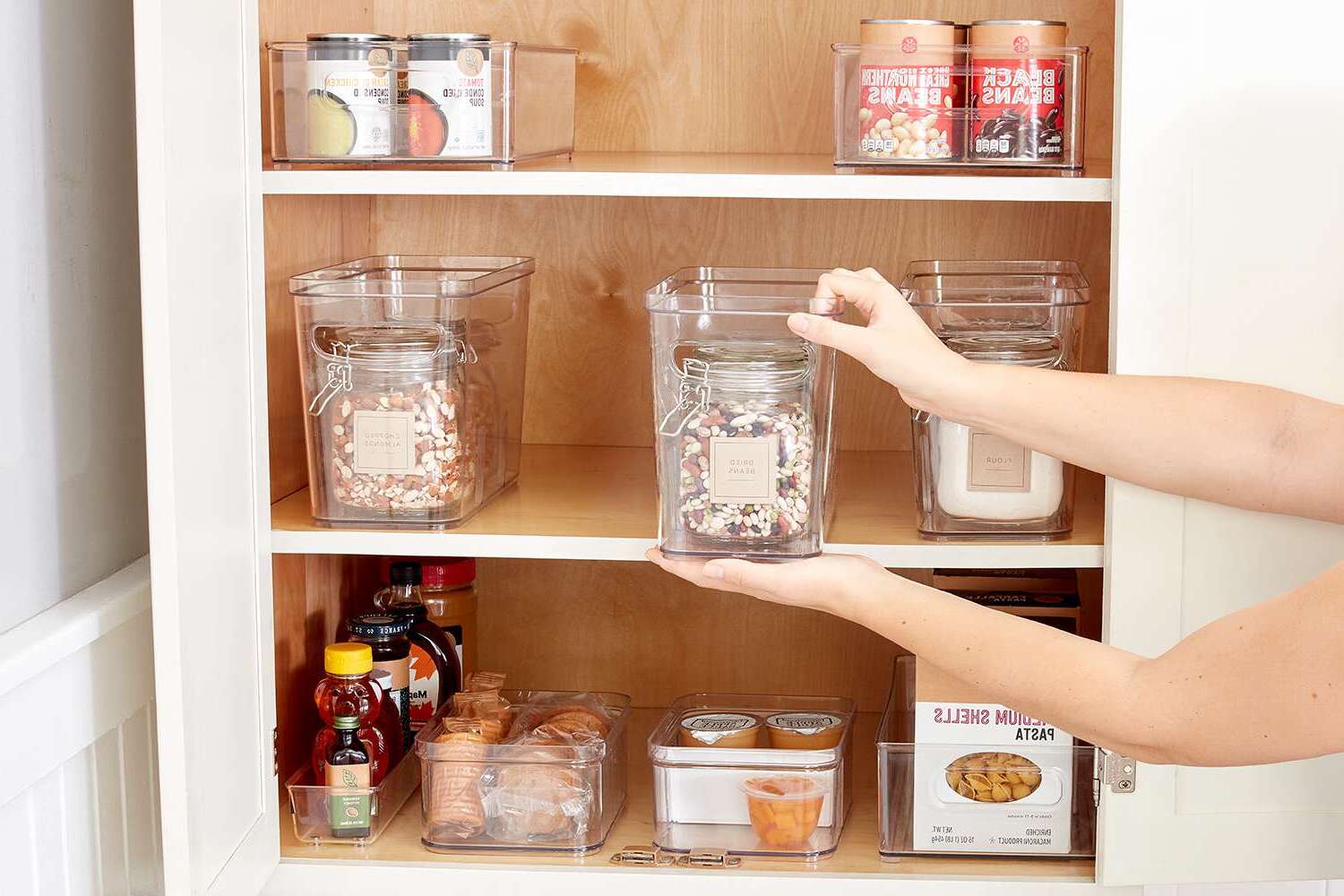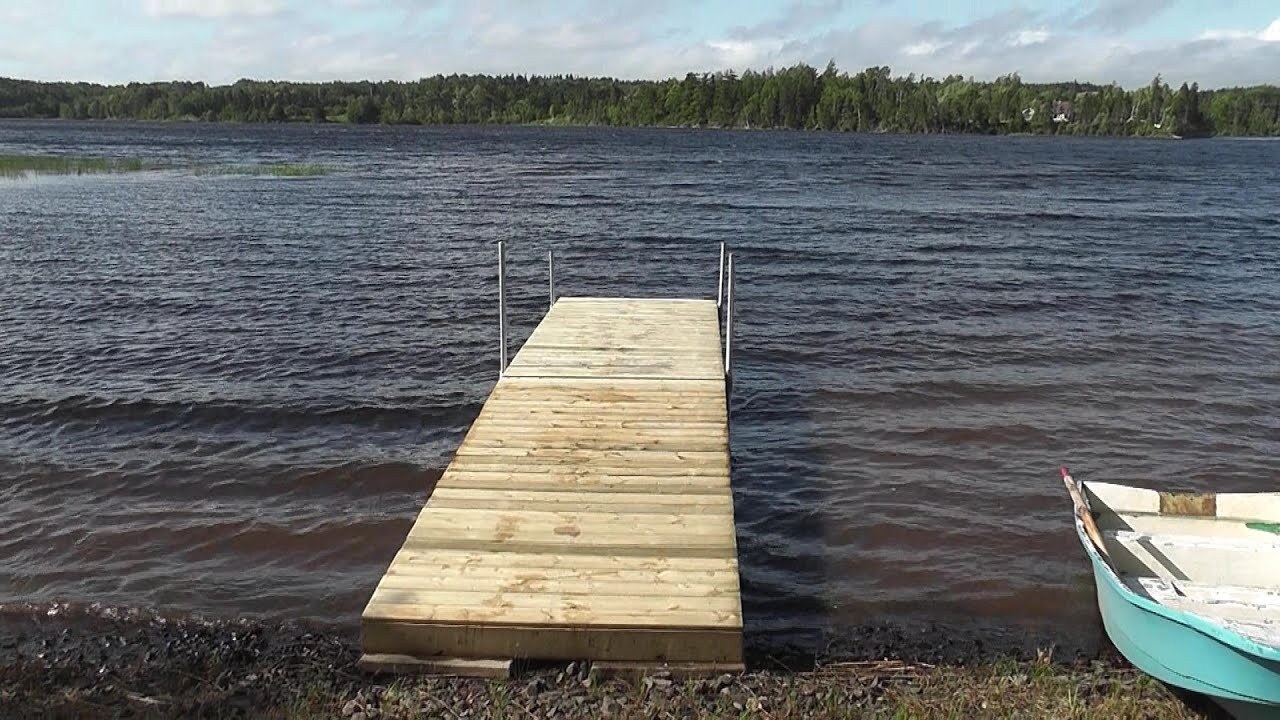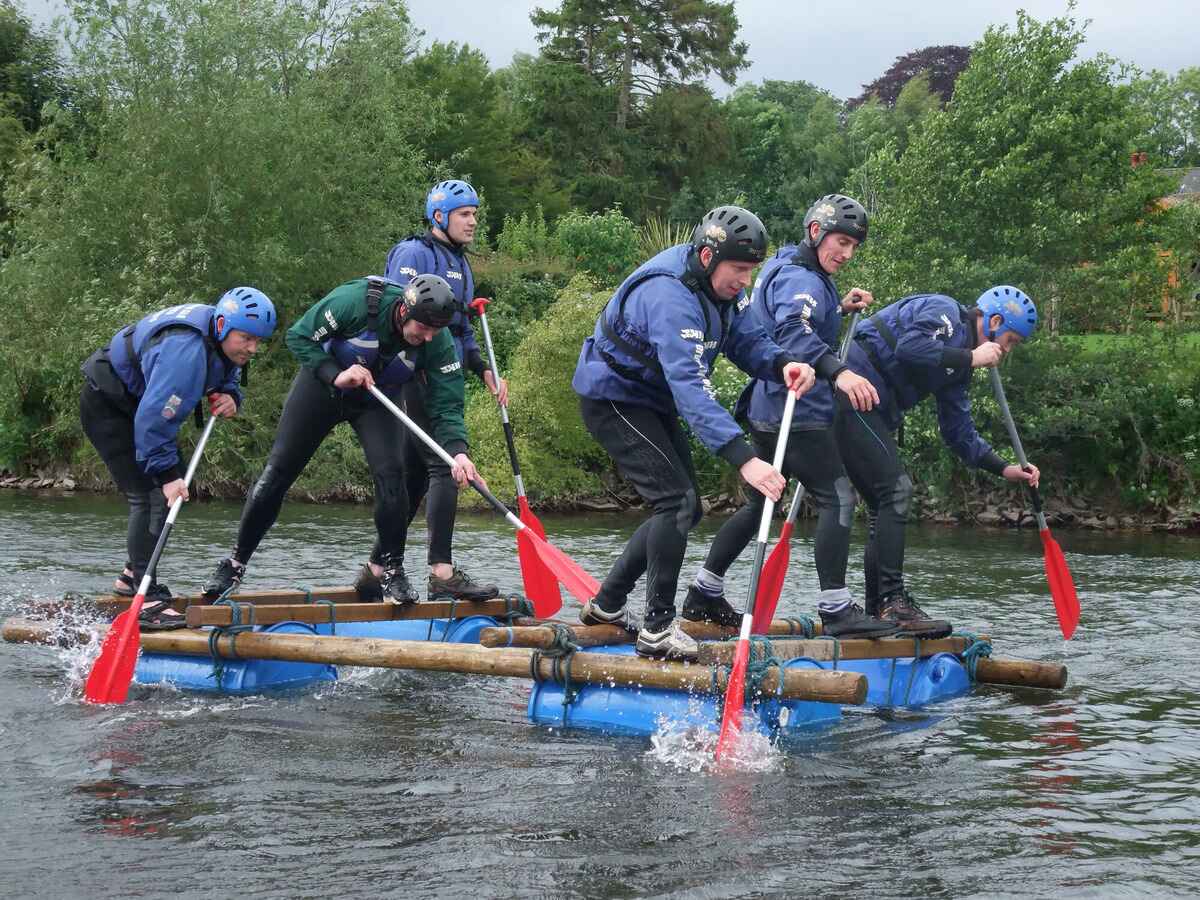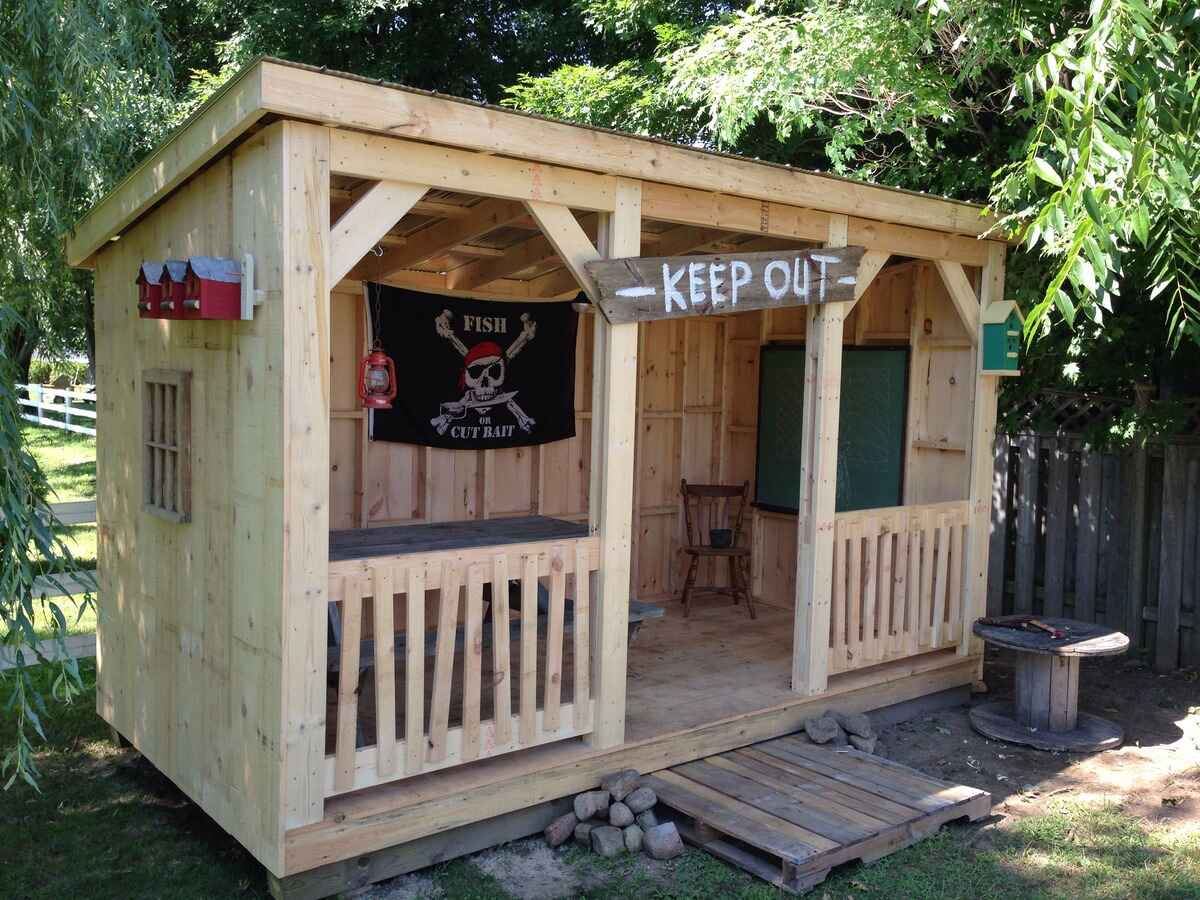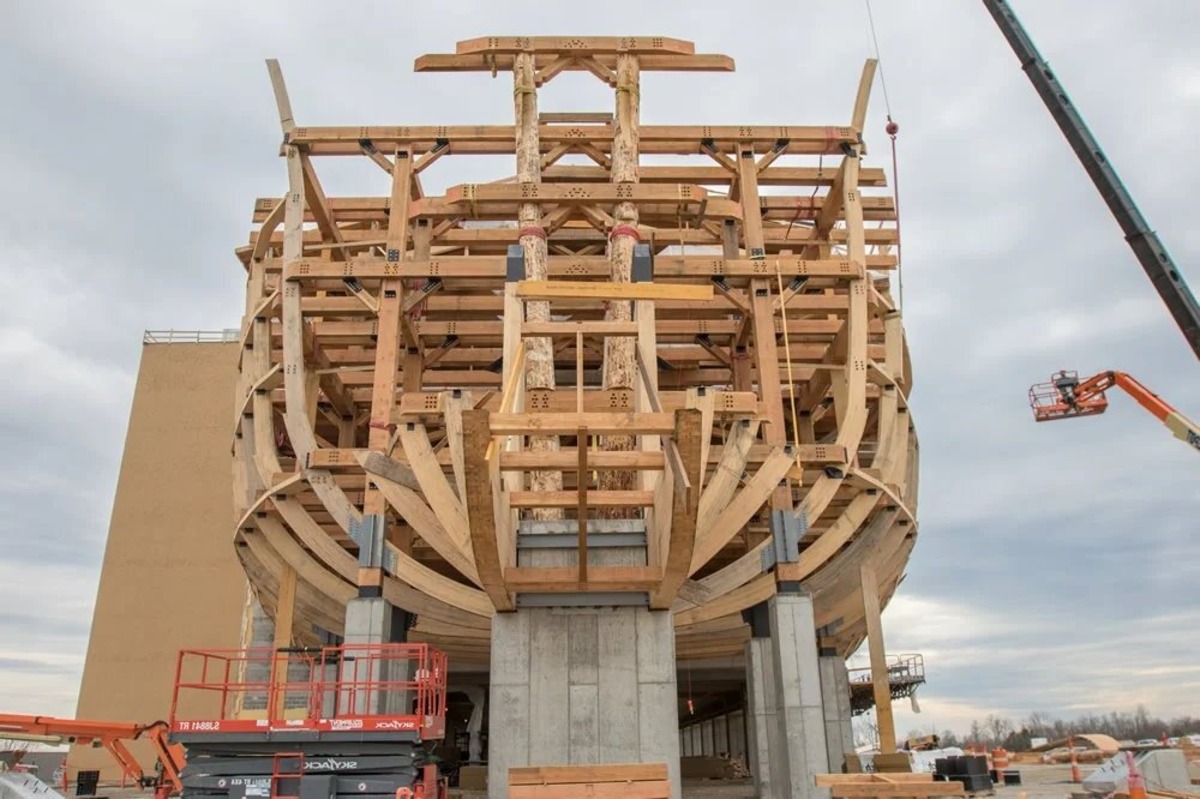Home>Create & Decorate>DIY & Crafts>How To Build An Aquaponics Greenhouse
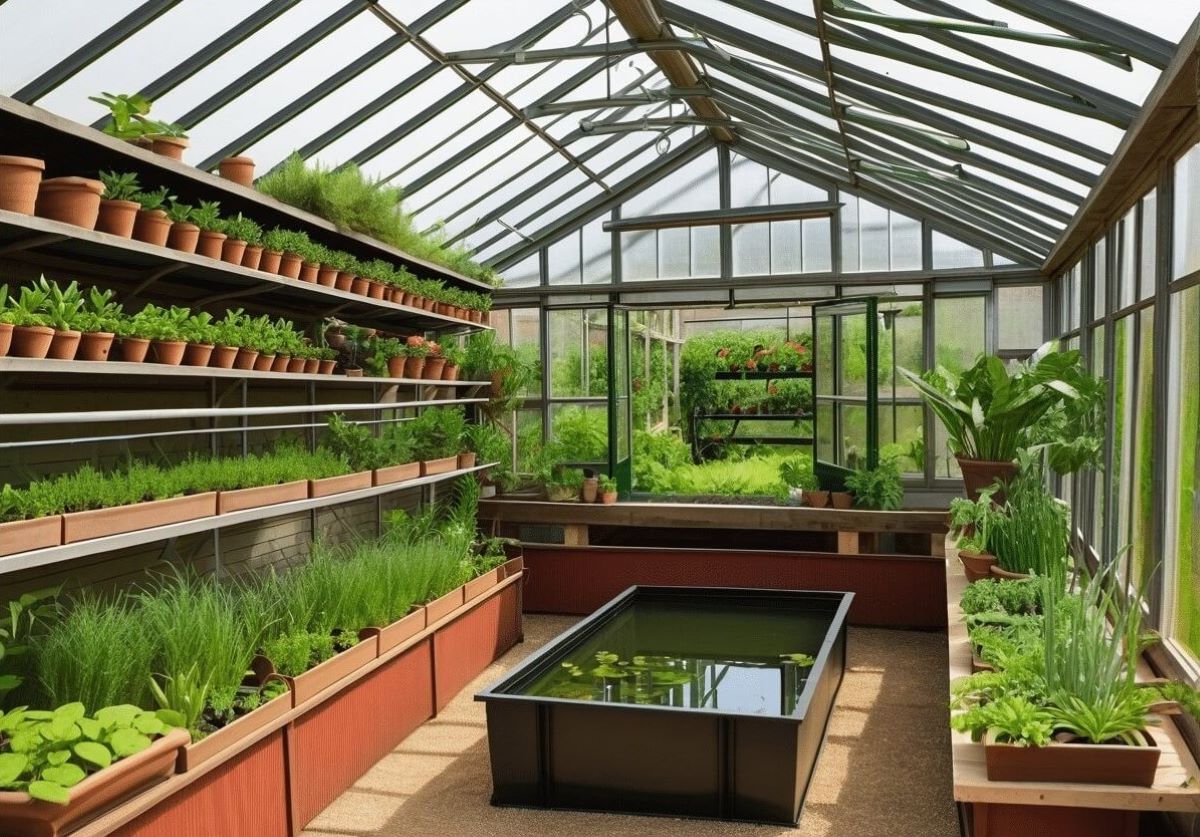

DIY & Crafts
How To Build An Aquaponics Greenhouse
Published: May 28, 2024

Content Creator specializing in woodworking and interior transformations. Caegan's guides motivate readers to undertake their own projects, while his custom furniture adds a personal touch.
Learn how to build your own aquaponics greenhouse with our step-by-step guide. Perfect for DIY & Crafts enthusiasts looking to create a sustainable and eco-friendly garden. Start your project today!
(Many of the links in this article redirect to a specific reviewed product. Your purchase of these products through affiliate links helps to generate commission for Twigandthistle.com, at no extra cost. Learn more)
Introduction
Are you looking to create a sustainable and efficient way to grow both fish and plants in your own backyard? Building an aquaponics greenhouse might just be the perfect solution for you. This innovative system combines aquaculture (the farming of fish) with hydroponics (growing plants in water) to create a self-sustaining ecosystem. In this article, we will guide you through the process of building your own aquaponics greenhouse, from understanding the basics of aquaponics to designing and maintaining your system. Let's dive in and explore the fascinating world of aquaponics!
Read more: How to Build a DIY Greenhouse Roof
Understanding Aquaponics
Aquaponics is a sustainable and symbiotic system that combines aquaculture and hydroponics. In this closed-loop system, fish waste provides an organic food source for the plants, and in turn, the plants naturally filter and clean the water for the fish. This creates a harmonious ecosystem where both fish and plants thrive. The key to the success of aquaponics lies in the nitrogen cycle. Fish produce ammonia-rich waste, which is broken down by beneficial bacteria into nitrates. These nitrates are then absorbed by the plants as nutrients, effectively purifying the water, which is then recirculated back to the fish tanks. This natural process eliminates the need for chemical fertilizers and large water consumption, making aquaponics an environmentally friendly and efficient method of food production.
Benefits of Aquaponics
- Sustainable: Aquaponics uses 90% less water than traditional soil-based gardening and eliminates the need for chemical fertilizers.
- Space-Efficient: It's perfect for urban or limited space environments, as the system can be set up vertically or in a small area.
- Year-Round Harvest: With a controlled environment, you can grow plants and raise fish regardless of the season.
- Low Maintenance: Once the system is established, it requires minimal maintenance compared to traditional gardening methods.
Components of an Aquaponics System
- Fish Tanks: These provide a habitat for the fish and are where the waste is produced.
- Grow Beds: Filled with a growing medium, such as clay pebbles, where the plants are grown.
- Pumps and Plumbing: These circulate the water from the fish tanks to the grow beds and back, ensuring a continuous flow of nutrients.
- Beneficial Bacteria: Essential for breaking down fish waste into nutrients that the plants can absorb.
Understanding the principles and components of aquaponics is crucial before embarking on building your own aquaponics greenhouse. With this knowledge, you'll be well-equipped to design and set up a successful aquaponics system.
Designing Your Greenhouse
When designing your aquaponics greenhouse, there are several key factors to consider to ensure the success of your system. Here's a detailed guide to help you create the perfect environment for your aquaponics setup.
Read more: How to Build a Basement Greenhouse
Location and Orientation
- Sunlight: Choose a location that receives ample sunlight throughout the day, as most plants require at least 6-8 hours of sunlight for optimal growth.
- Wind Exposure: Consider the direction of prevailing winds to minimize exposure to strong gusts, which can damage the structure and affect temperature regulation.
Greenhouse Structure
- Materials: Select durable and weather-resistant materials for the frame, such as treated lumber, PVC, or metal, and choose a covering material like polycarbonate panels or greenhouse plastic that allows for maximum light penetration.
- Ventilation: Incorporate windows, vents, or fans to regulate temperature and humidity within the greenhouse, creating a comfortable environment for both fish and plants.
Climate Control
- Heating and Cooling: Depending on your climate, you may need to install heating or cooling systems to maintain the ideal temperature range for your aquaponics system.
- Insulation: Proper insulation helps conserve energy and stabilize temperatures, especially during colder months.
Water and Electricity Supply
- Access to Water: Ensure easy access to a water source for filling and topping up the aquaponics system.
- Electricity: Plan for electrical outlets to power pumps, heaters, and other essential equipment.
Layout and Space Utilization
- Efficient Use of Space: Design the layout to maximize space for grow beds, fish tanks, and walkways, ensuring easy access for maintenance and harvesting.
- Accessibility: Consider the ergonomics of the space to make maintenance tasks convenient and comfortable.
Integration of Aquaponics System
- Positioning of Grow Beds: Strategically place the grow beds to receive natural light and ensure efficient water flow from the fish tanks.
- Plumbing and Drainage: Plan the plumbing layout to facilitate water circulation and drainage, preventing waterlogging in the grow beds.
By carefully considering these aspects when designing your aquaponics greenhouse, you can create an environment that promotes the healthy growth of both fish and plants while providing a sustainable and efficient food production system.
Choosing the Right Fish and Plants
Selecting the appropriate fish and plants is crucial for the success of your aquaponics system. When choosing fish, consider species that are well-suited to closed aquaculture systems and can thrive in the water conditions created by the aquaponics setup. Similarly, the selection of plants should align with the nutrient levels provided by the fish waste. Here's a detailed guide to help you make the right choices for your aquaponics greenhouse.
Fish Selection
- Tilapia: Known for their rapid growth and ability to adapt to varying water conditions, tilapia are a popular choice for aquaponics systems. They are also a great source of protein.
- Trout: If you live in a cooler climate, trout can be a suitable option. They require well-oxygenated water and cooler temperatures.
- Catfish: Catfish are hardy and can tolerate a wide range of water conditions, making them a resilient choice for aquaponics.
When selecting fish for your aquaponics system, consider factors such as water temperature, oxygen levels, and compatibility with the chosen plant species. It's essential to ensure that the fish species you choose are legal and suitable for aquaculture in your area.
Plant Selection
- Leafy Greens: Plants such as lettuce, kale, and spinach thrive in aquaponic systems. They efficiently absorb nutrients from the water and grow rapidly.
- Herbs: Herbs like basil, mint, and cilantro are well-suited for aquaponics and add flavor to your culinary endeavors.
- Fruiting Plants: Tomatoes, cucumbers, and peppers can also be grown in aquaponics systems, providing a variety of fresh produce.
Consider the nutritional requirements and growth characteristics of the plants when making your selection. Ensure that the plants you choose are compatible with the nutrient levels provided by the fish waste in the system.
By carefully choosing the right fish and plants for your aquaponics greenhouse, you can create a balanced ecosystem where both components support each other's growth and contribute to a sustainable and productive system.
Setting Up the Aquaponics System
Setting up the aquaponics system involves integrating the components to create a functional and balanced ecosystem for the fish and plants. Here's a step-by-step guide to help you set up your aquaponics system effectively.
1. Assembling the Components
- Position the Fish Tanks: Place the fish tanks in a suitable location within the greenhouse, ensuring stability and easy access for maintenance.
- Install Grow Beds: Position the grow beds above or adjacent to the fish tanks, allowing for efficient water flow between the two components.
- Set Up Pumps and Plumbing: Install the water pumps and plumbing to facilitate the circulation of water from the fish tanks to the grow beds and back. Ensure that the plumbing layout promotes even distribution of water and nutrients.
2. Adding the Growing Medium
- Fill the Grow Beds: Add the chosen growing medium, such as clay pebbles or gravel, to the grow beds. The growing medium provides support for the plants and serves as a habitat for beneficial bacteria.
3. Introducing Fish and Plants
- Acclimate the Fish: Gradually introduce the fish to the tanks, allowing them to adjust to the water conditions. Monitor the water parameters to ensure optimal conditions for the fish.
- Planting: Plant the selected crops in the grow beds, ensuring proper spacing and coverage. The plants will soon establish their root systems in the growing medium.
4. Cycling the System
- Initiate the Nitrogen Cycle: Allow the system to cycle and establish beneficial bacteria. This process involves the conversion of fish waste into nutrients that can be absorbed by the plants. It may take several weeks for the system to fully cycle.
5. Monitoring and Adjusting
- Water Quality: Regularly test the water parameters, including pH, ammonia, nitrites, and nitrates, to ensure a healthy environment for the fish and plants.
- Nutrient Levels: Monitor the nutrient levels in the water to ensure that the plants receive adequate nutrients from the fish waste.
- Adjusting the System: Make necessary adjustments to the water flow, aeration, and temperature to optimize the conditions for both the fish and plants.
6. Establishing a Feeding Schedule
- Fish Feeding: Implement a feeding schedule for the fish, ensuring that they receive a balanced diet. The fish waste generated from feeding will contribute to the nutrient cycle in the system.
Read more: DIY Greenhouse Door Ideas
7. Balancing the Ecosystem
- Observation and Maintenance: Regularly observe the fish and plants for signs of growth and health. Perform routine maintenance tasks, such as cleaning filters and removing any debris from the system.
By following these steps and closely monitoring the aquaponics system, you can establish a thriving and self-sustaining ecosystem that provides a continuous harvest of fresh fish and vegetables.
Maintaining Your Aquaponics Greenhouse
Maintaining your aquaponics greenhouse is essential to ensure the continued health and productivity of the system. Regular upkeep and monitoring of the fish, plants, and equipment are crucial for sustaining a balanced and thriving ecosystem.
1. Water Quality Management
- Regular Testing: Continuously monitor the water parameters, including pH levels, ammonia, nitrites, and nitrates. Testing kits are essential for assessing the water quality and making adjustments as needed.
- Water Changes: Periodically, a portion of the water may need to be replaced to maintain optimal water quality for the fish and plants. Ensure that the replacement water is free from chlorine and other harmful chemicals.
2. Fish Care
- Feeding: Maintain a consistent feeding schedule for the fish, providing them with a balanced diet. Avoid overfeeding, as excess uneaten food can lead to water quality issues.
- Health Observation: Regularly observe the fish for any signs of illness or distress. Promptly address any health concerns to prevent the spread of diseases within the aquaponics system.
3. Plant Maintenance
- Pruning and Harvesting: Trim and harvest the plants as needed to promote healthy growth and prevent overcrowding. Pruning encourages new growth and ensures adequate light penetration.
- Nutrient Monitoring: Keep an eye on the nutrient levels in the water to ensure that the plants are receiving the necessary nutrients from the fish waste.
4. Equipment Checks
- Pump Maintenance: Inspect and clean the water pumps regularly to prevent clogging and ensure proper water circulation.
- Plumbing and Filters: Check the plumbing and filtration systems for any blockages or leaks. Clean or replace filters as necessary to maintain efficient water flow and filtration.
5. Pest and Disease Control
- Preventative Measures: Implement measures to prevent pests and diseases from affecting the plants. This may include introducing beneficial insects or using natural pest control methods.
- Early Intervention: If pests or diseases are detected, take prompt action to address the issue before it spreads throughout the greenhouse.
6. Environmental Control
- Temperature Regulation: Monitor and adjust the greenhouse temperature as needed, especially during extreme weather conditions, to ensure the comfort and well-being of the fish and plants.
- Humidity Management: Maintain optimal humidity levels within the greenhouse to prevent mold and mildew growth while promoting healthy plant growth.
7. Routine Cleaning
- Grow Bed Maintenance: Regularly clean the grow beds to remove any debris or accumulated solids. This helps prevent clogging and maintains a healthy growing environment for the plants.
- Greenhouse Sanitation: Keep the greenhouse clean and free from debris to minimize the risk of contamination and maintain a healthy environment for the aquaponics system.
By consistently maintaining and monitoring your aquaponics greenhouse, you can ensure the long-term success of the system, providing a continuous supply of fresh fish and vegetables while creating a sustainable and eco-friendly food production method.
Troubleshooting Common Issues
Even with careful maintenance, aquaponics systems may encounter common issues that require troubleshooting to ensure the continued health and productivity of the ecosystem. Here are some common problems and their potential solutions:
1. Water Quality Imbalance
- Issue: Fluctuations in pH levels, ammonia, nitrites, or nitrates can disrupt the delicate balance of the aquaponics system.
- Solution: Regularly test the water parameters and make adjustments as needed. Adding buffering agents or performing partial water changes can help stabilize pH levels. Ensure that the biological filtration is functioning optimally to convert ammonia and nitrites into nitrates.
2. Poor Plant Growth
- Issue: Slow or stunted plant growth may indicate nutrient deficiencies or inadequate light exposure.
- Solution: Monitor the nutrient levels in the water and supplement with organic nutrients if necessary. Adjust the positioning of grow lights or the greenhouse structure to provide adequate light for the plants.
3. Fish Health Problems
- Issue: Fish displaying unusual behavior or signs of illness may indicate water quality issues or disease.
- Solution: Conduct a thorough assessment of the water parameters and address any imbalances. Quarantine affected fish and administer appropriate treatments if diseases are identified. Ensure that the fish are receiving a balanced diet and are not overcrowded in the tanks.
4. Clogging in Grow Beds
- Issue: Accumulation of debris or solids in the grow beds can lead to clogging and hinder water flow.
- Solution: Regularly clean and maintain the grow beds to remove any debris. Consider installing solids lifting outlets or additional filtration to prevent clogging.
5. Pest Infestations
- Issue: Pests such as aphids or mites can affect plant health and productivity.
- Solution: Implement natural pest control methods such as introducing beneficial insects or using organic pest repellents. Regularly inspect the plants for signs of pest infestations and take prompt action to address the issue.
6. Equipment Malfunctions
- Issue: Malfunctions in water pumps, aeration systems, or heaters can disrupt the overall functionality of the aquaponics system.
- Solution: Conduct routine checks and maintenance of the equipment to ensure proper functioning. Replace worn-out parts and components as needed to prevent disruptions in the system.
By promptly identifying and addressing these common issues, you can maintain the stability and productivity of your aquaponics greenhouse, creating an optimal environment for the growth of both fish and plants.
Conclusion
Building an aquaponics greenhouse offers a rewarding and sustainable approach to food production, integrating the cultivation of fish and plants in a mutually beneficial ecosystem. By understanding the principles of aquaponics, carefully designing the greenhouse, selecting suitable fish and plants, and effectively setting up and maintaining the system, you can create a self-sustaining environment that yields fresh, organic produce and fish year-round. Embracing the benefits of aquaponics, such as water efficiency, space optimization, and low maintenance, allows for a greener and more eco-friendly approach to home gardening and food cultivation. With proper care and attention to the system's needs, an aquaponics greenhouse can provide a continuous harvest of nutritious and delicious produce while minimizing environmental impact. Whether you are a seasoned gardener or a novice enthusiast, the journey of building and nurturing an aquaponics greenhouse promises a fulfilling and enriching experience, connecting you with the natural cycles of growth and sustainability.

